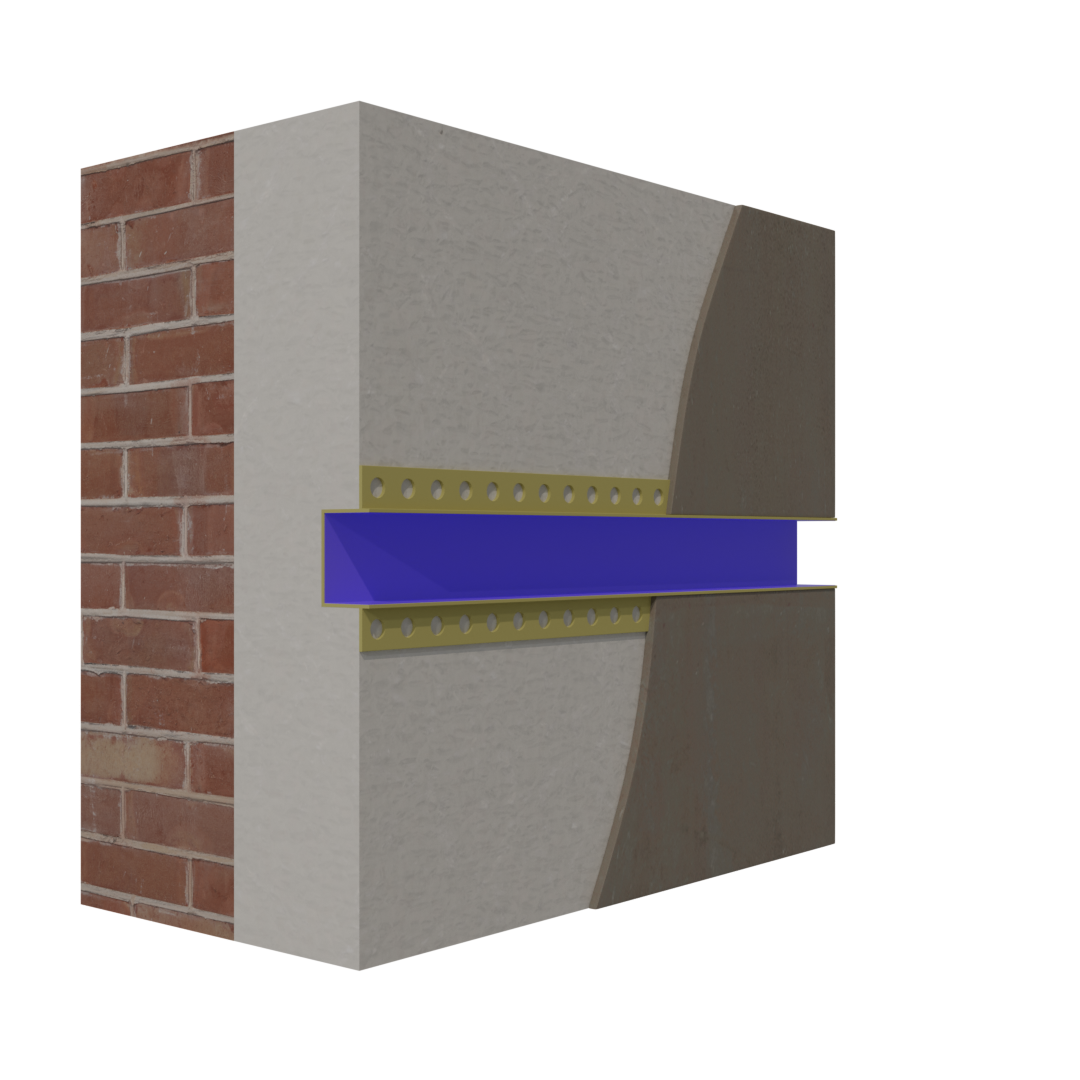



PLASTIC ELEVATION PROFILE FOR RUSTIC WORKS
Facade works
Technical characteristics:
Type of angle: for rustication
Kind of angle: without reinforcing mesh
Material: PVC
Length, m: 3.0
Width of the groove, mm: 20/20, 30/20, 50/20
Quantity in the package, pcs.: 48/ 30/ 20
for making architectural and aesthetic elements (decorative grooves) on an insulated facade.
providing an aesthetic appearance of the building;
assurance of straight and even grooves on the facade;
strengthening of the groove edges due to a solid PVC profile;
resistance of the “groove” to water and mechanical damage.
The groove profile is installed on facades insulated with foam plastic or mineral wool. A groove (1–2 mm more than the depth and width of the profile) is made in the thermal insulating facade layer. Next, the profile is mounted on special adhesive mixture. The next stage is to reinforce the “wings” of the profile. After the adhesive has dried, one can proceed to next stages: coating and covering the facade with the plaster. The protective foil, which is on the inner part of the profile, is removed after the plastering works have been completed.
Rusticated Plastic Profile: Reliability and Aesthetics for Your Construction Projects
Modern construction requires high-quality materials that boost durability and aesthetics. The rusticated plastic profile separates and protects joints, ensuring secure connections against external influences. This article outlines its features, benefits, and compatibility.
What is the Rusticated Plastic Profile?
The rusticated plastic profile is a specialized element for decorative and functional joints on facades and surfaces. Made from high-quality plastic, it resists external influences, ensuring a long service life while creating clear lines and protecting against damage.
Main Functions:
Decorative: Forms precise geometric lines that enhance the aesthetic appeal of facades.
Protective: Shields surfaces from cracks, moisture, and mechanical damage.
Technical: Helps accommodate thermal expansion of materials, preventing crack formation.
Advantages:
Durability: Made from UV, moisture, and temperature-resistant materials for lasting indoor and outdoor performance.
Ease of Installation: Lightweight and flexible, it mounts quickly with minimal tools, reducing time and cost.
Cost-Effectiveness: Its long lifespan and low maintenance make it an economical choice.
Applications:
Facade Finishing: Widely used to create clear, even joints on building facades, giving structures a finished look and enhancing their aesthetic value.
Interior Decoration: Also ideal for creating decorative joints in interior spaces, adding style and improving overall design.
Renovation & Repair: Assists in restoring and reinforcing joints during building renovations, preventing deformation and damage.
Interaction with Other Materials:
Sealing Profile: Forms a barrier with the rusticated profile, blocking moisture and dirt to boost durability.
Corner Expansion Sealing Profile: Compensates for corner movements, enhancing resistance to temperature changes and stress.
Beacon Rail: Levels walls before plastering for a secure installation.
Plaster Corner Bead: Creates precise lines on facades and interiors, enhancing aesthetics and longevity.
Purchasing & Installation:
The rusticated plastic profile is available at specialized construction stores or can be ordered online. For optimal results, professional installation is recommended, though its user-friendly design also allows for self-installation.
Conclusion:
The rusticated plastic profile is key in modern construction, offering both aesthetic appeal and robust protection. Combined with sealing profiles, corner expansion profiles, beacon rails, and plaster corner beads, it delivers high-quality workmanship and lasting reliability.